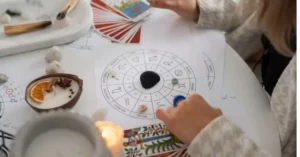Semana Santa, or Holy Week, is a vibrant tapestry of culture and tradition that captivates the hearts of those who experience it. As we look ahead to 2025, excitement builds for one of the most significant religious celebrations in Spanish-speaking countries. From grand processions to stunning displays of devotion, Semana Santa 2025 offers an unforgettable journey through faith and artistry.
This celebration isn’t limited to just Spain; destinations worldwide put their unique spin on this extraordinary event. Whether you’re drawn to Seville’s exuberant parades or Guatemala’s breathtaking ceremonies, each locale presents its own charm and significance during Semana Santa 2025.
Join us as we explore some of the best destinations for experiencing this awe-inspiring week. You might find your next travel adventure waiting within these pages!
Seville Semana Santa Dates for 2025
Semana Santa in Seville is a spectacle that draws visitors from all over the globe. In 2025, this vibrant celebration will take place from April 13 to April 20. These dates mark a week steeped in history and religious significance.
The heart of the festivities begins on Palm Sunday, known as Domingo de Ramos. This year, it falls on April 13. On this day, locals and tourists alike gather to witness the blessing of palm branches before they join processions through the streets.
As we move into Holy Monday (April 14), expect an array of beautifully adorned pasos—religious sculptures carried by dedicated nazarenos. Each paso tells its own story and showcases extraordinary craftsmanship.
Holy Tuesday continues with more processions, each city neighborhood excitedly participating with its unique traditions. The atmosphere envelops you; music fills the air while aromas from local food vendors tempt your senses.
Wednesday brings even greater anticipation, culminating in one of Seville’s most famous processions: La Macarena. Revered for its poignant beauty, it’s an experience not to be missed during Semana Santa 2025.
Maundy Thursday features symbolic rituals that reflect deep spirituality and communal bonding among participants. As evening falls, numerous brotherhoods take part in mesmerizing nocturnal parades under stunning candlelight.
Finally comes Good Friday (April 18) when emotions run high as devotees commemorate Christ’s crucifixion through solemn yet powerful displays throughout the cityscape filled with historical landmarks dressed in flowers and candles illuminating their pathways.
Each day offers something new—a mix of tradition, artistry, and heartfelt devotion that makes Seville’s Semana Santa truly unique!
Holy Week 2025 in Seville
Holy Week, or Semana Santa, in Seville is a spectacle like no other. It draws thousands of visitors each year who come to witness the stunning processions that fill the streets with color and emotion. In Semana Santa 2025, this vibrant celebration promises to be even more captivating.
The dates for Semana Santa 2025 fall from April 13 to April 20. This week-long event features elaborate floats adorned with religious icons and accompanied by participants dressed in traditional robes. The atmosphere is charged with spirituality, history, and cultural significance.
During these days, the city transforms into an open-air gallery showcasing centuries-old traditions. Each procession carries its own unique story and meaning, allowing spectators to connect deeply with the rituals performed throughout Holy Week. The sound of drums echoes through narrow streets as bands play somber melodies that set the tone for reflection.
One cannot forget about La Macarena or El Gran Poder—two of Seville’s most revered pasos (floats). These beautifully crafted pieces are carried by cofradías (brotherhoods) made up of passionate members dedicated to preserving their heritage while celebrating faith through artful expression.
As night falls, the mood shifts dramatically. Candlelit processions illuminate darkened alleyways creating a mystical ambiance where shadows dance along ancient buildings. Witnessing this transformative experience invites contemplation on both personal beliefs and collective culture.
Street vendors selling traditional foods enhance your visit further; savoring churros dipped in thick chocolate or enjoying tapas while watching locals participate adds layers of flavor—both literal and metaphorical—to your adventure during Semana Santa 2025.
Sevilla’s charm lies not only within its historic architecture but also how seamlessly it intertwines religion with festivity during Holy Week—the passion evident everywhere you turn makes each moment unforgettable as you immerse yourself fully into local life amidst such profound celebrations.
Semana Santa in Granada
Semana Santa 2025 in Granada is a vibrant and deeply rooted tradition that captivates locals and visitors alike. Every year, the city transforms into a tapestry of colors, sounds, and emotions as Holy Week unfolds. The air thickens with anticipation as preparations begin weeks in advance.
The processions are the heart of Semana Santa here. Each day features stunning parades led by different brotherhoods or “cofradías.” These groups take great pride in their historical costumes and intricate floats adorned with religious imagery. As night falls, candlelight creates an ethereal atmosphere that enchants everyone who witnesses it.
One standout feature of Granada’s celebrations is its unique blend of cultures. With influences from Moorish history, the festivities carry a special charm not found elsewhere in Spain. The backdrop of the Alhambra adds to this allure; illuminated against the night sky, it’s hard to imagine a more picturesque setting for such solemn events.
Throughout Holy Week, you’ll hear music wafting through narrow streets—traditional saetas echoing from balconies high above add drama to each procession. These passionate flamenco songs pay homage to Christ’s suffering while offering moments of raw emotion that resonate deeply within spectators.
Food also plays an essential role during Semana Santa in Granada. Street vendors offer local delicacies like “pestiños” (sweet pastries) and “torrijas” (Spanish-style French toast). As you savor these treats amid lively crowds, you can feel part of something grander than yourself—the spirit of community shines brightly here.
As the week progresses towards Easter Sunday, excitement peaks on Good Friday with one particularly poignant procession taking place at dusk. This event captures both sorrow and hope—a beautiful reminder that renewal follows even the darkest times.
Experiencing Semana Santa 2025 in Granada immerses you fully into age-old customs filled with passion and reverence unlike any other destination celebrating this sacred week across Spain or Latin America.
Experiencing Semana Santa in Sevilla
Experiencing Semana Santa in Sevilla is like stepping into a living painting. The air buzzes with anticipation as the city prepares for one of its most revered traditions. Each year, thousands flock to the streets, drawn by the promise of culture and spirituality.
As you wander through the narrow cobblestone streets, colorful processions come alive before your eyes. Sinister yet mesmerizing floats parade slowly, carried by devoted members of brotherhoods dressed in traditional attire. Their hooded robes add an air of mystery while honoring centuries-old customs.
The scent of incense wafts through the air, mingling with the sound of brass bands playing somber melodies. Every note resonates deeply within those who gather to witness this unique spectacle. It’s not just about observing; it’s about feeling connected to something larger than life itself.
One cannot overlook the breathtaking artistry on display during these processions. Elaborate sculptures depicting biblical scenes are adorned with vibrant flowers and candles that flicker softly in twilight. You may find yourself mesmerized as each float passes by, capturing both beauty and sorrow.
The atmosphere shifts dramatically at night when lanterns illuminate darkened plazas. Here, locals spill out from their homes to share stories passed down through generations—tales woven into Sevilla’s rich tapestry during Holy Week events.
Engaging with local traditions enhances this experience immensely. Sharing tapas or enjoying an authentic Andalusian meal becomes part of immersing oneself fully in Semana Santa 2025 festivities! Discover hidden gems tucked away from tourist paths where heartfelt conversations unfold over shared plates.
Witnessing emotional moments also adds depth to your journey—people weeping quietly or embracing friends amid solemnity reminds you how intertwined faith and community truly are here during such celebrations.
The Magic of Semana Santa in Guatemala
Semana Santa 2025 in Guatemala offers a unique blend of cultural richness and spiritual significance. The celebrations here are deeply rooted in tradition, showcasing an impressive display of artistry and devotion that attracts visitors from around the world.
As the sun sets over Antigua, the cobblestone streets come alive with colorful alfombras made from sawdust, flowers, and vegetables. These stunning carpets serve as a canvas for artistic expression while paving the way for processions that wind through the town’s historic center. Each step taken on these vibrant creations is filled with reverence and respect for this sacred week.
The Semana Santa 2025 festivities begin on Palm Sunday and culminate on Easter Sunday. Throughout this period, solemn processions featuring elaborate floats depicting scenes from Christ’s passion can be seen moving slowly through picturesque streets. Participants dressed in traditional attire carry candles and religious icons as they walk alongside thousands of spectators who gather to witness this powerful event.
One cannot overlook the captivating music accompanying each procession. Local bands play somber tunes that echo throughout the valleys surrounding Antigua, creating an atmosphere steeped in reflection and mourning yet also celebrating life renewal.
Visiting Guatemala during Semana Santa presents an opportunity not just to observe but to engage with local customs firsthand. Whether sharing stories with locals or enjoying regional delicacies offered at street stalls, travelers find themselves immersed in a tapestry woven over centuries of faith-filled practices.
Guatemala’s approach to Holy Week stands out among other destinations due to its extraordinary emphasis on community spirit combined with artistic heritage—an experience unlike any other during this globally recognized celebration. For those considering their travel plans for Semana Santa 2025, don’t miss out on witnessing how culture comes together beautifully within these heartfelt traditions across Central America!









